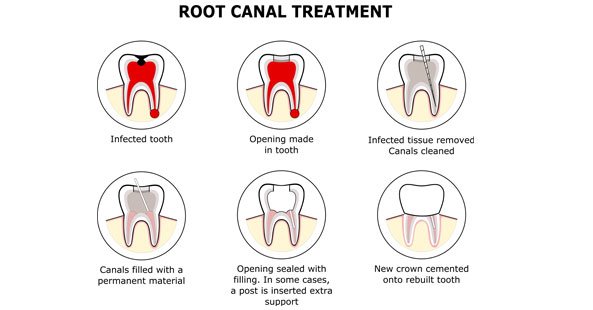Root Canal
Treatment
A root canal is performed when the soft inner part of a tooth, known as the pulp, is injured or becomes inflamed or infected.
Our dentist will assess the likelihood of success before performing root canal therapy, usually by viewing an x-ray of the tooth.
